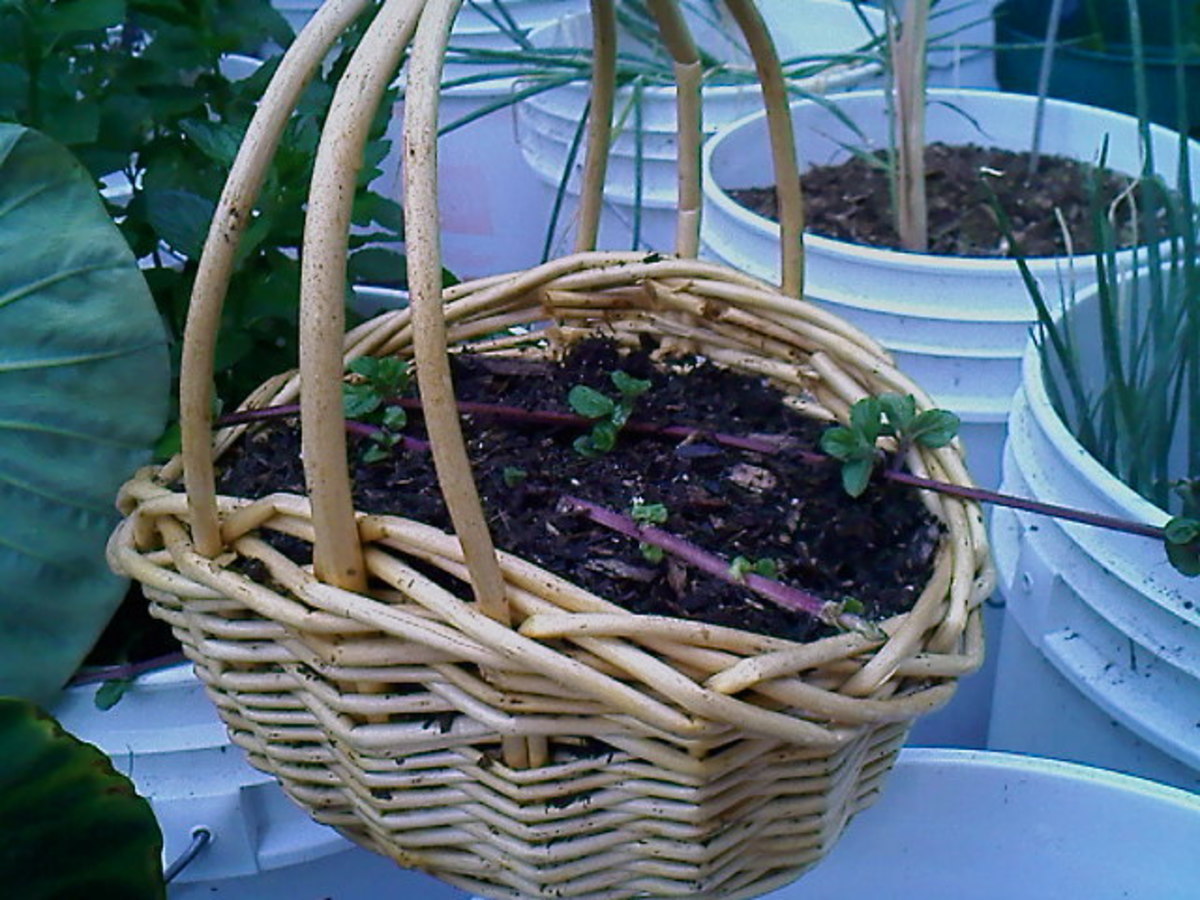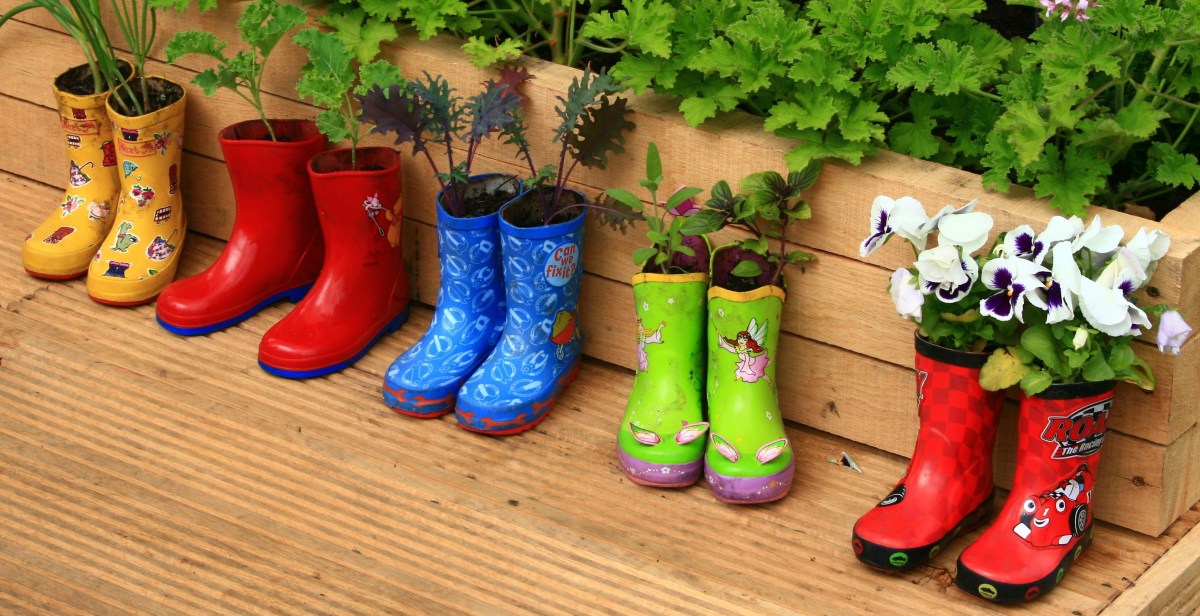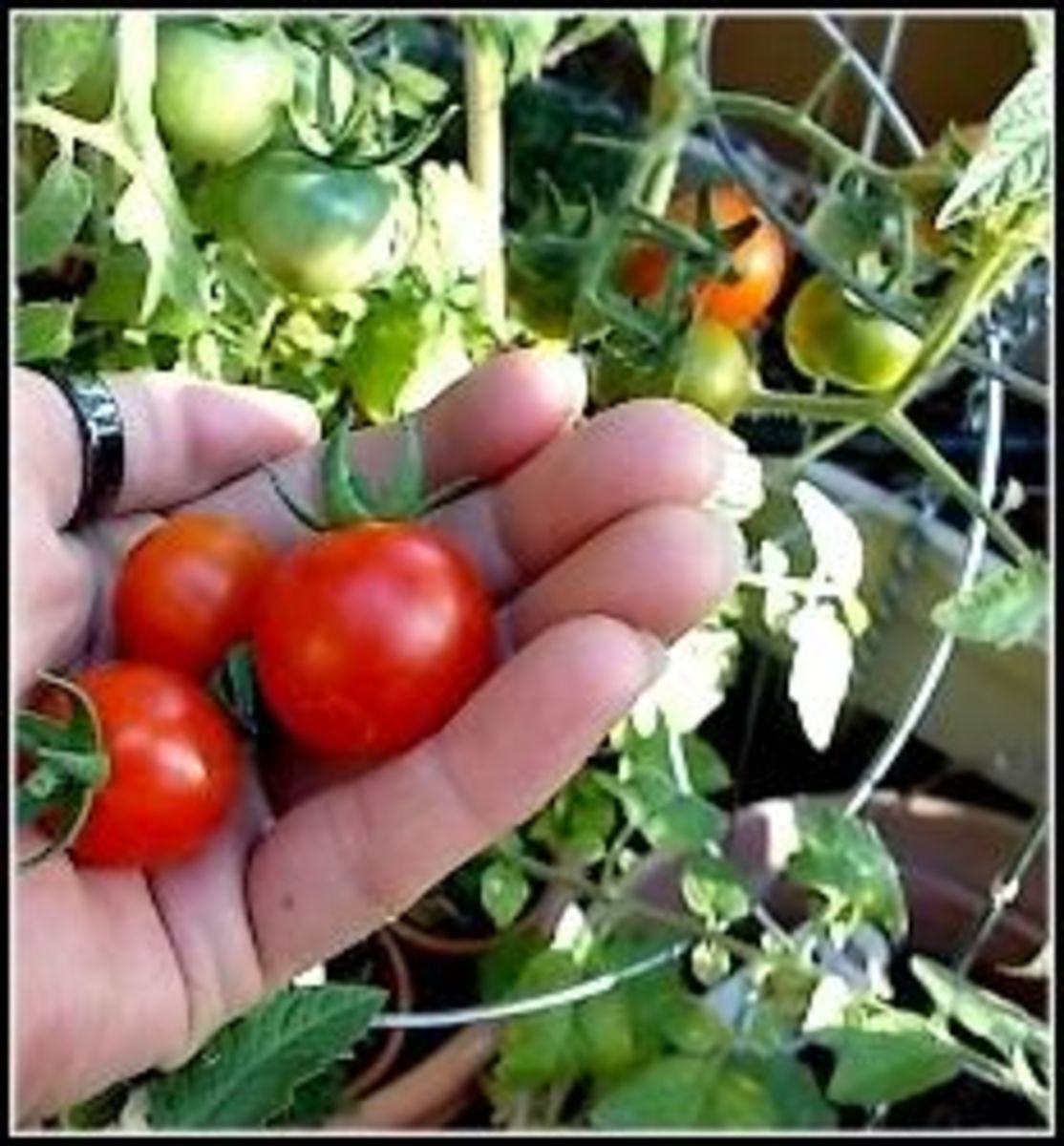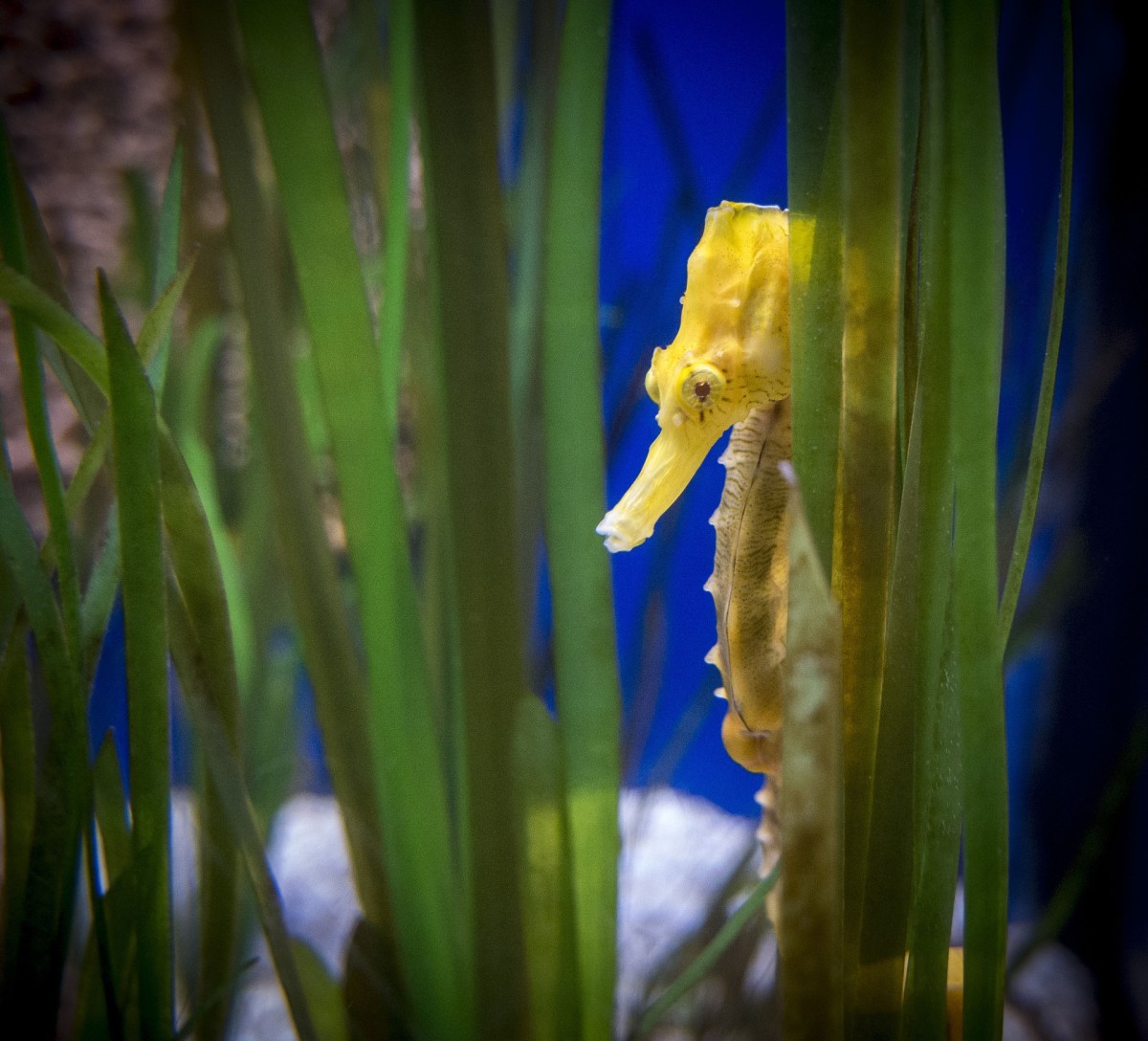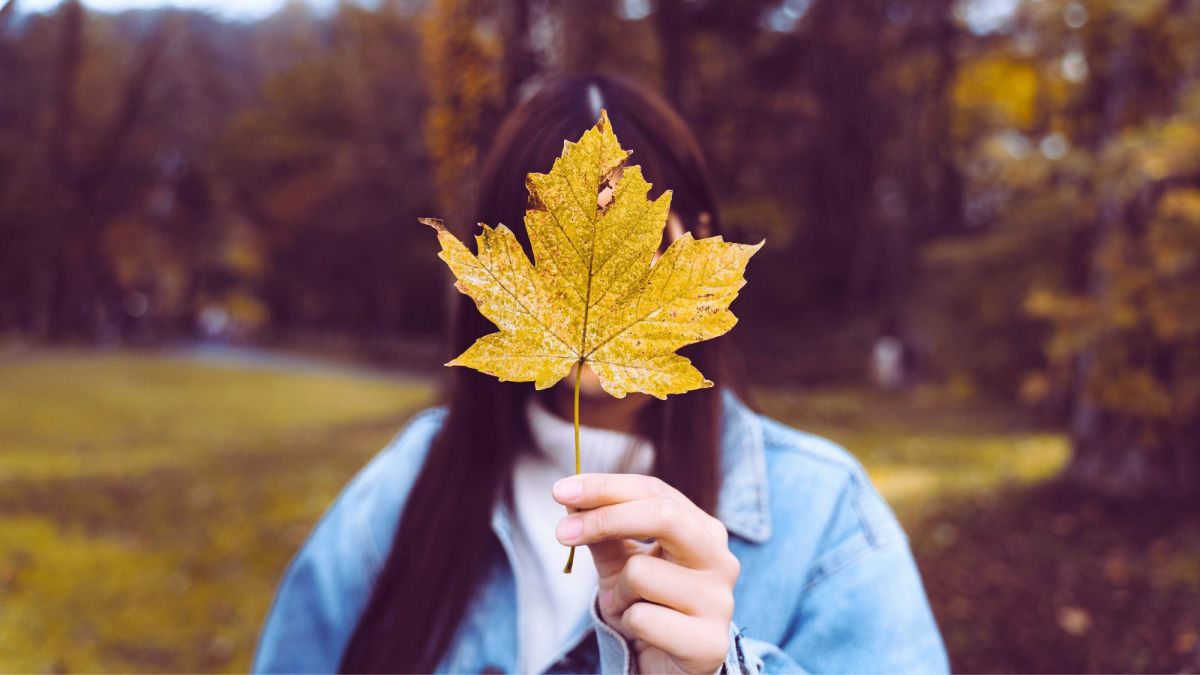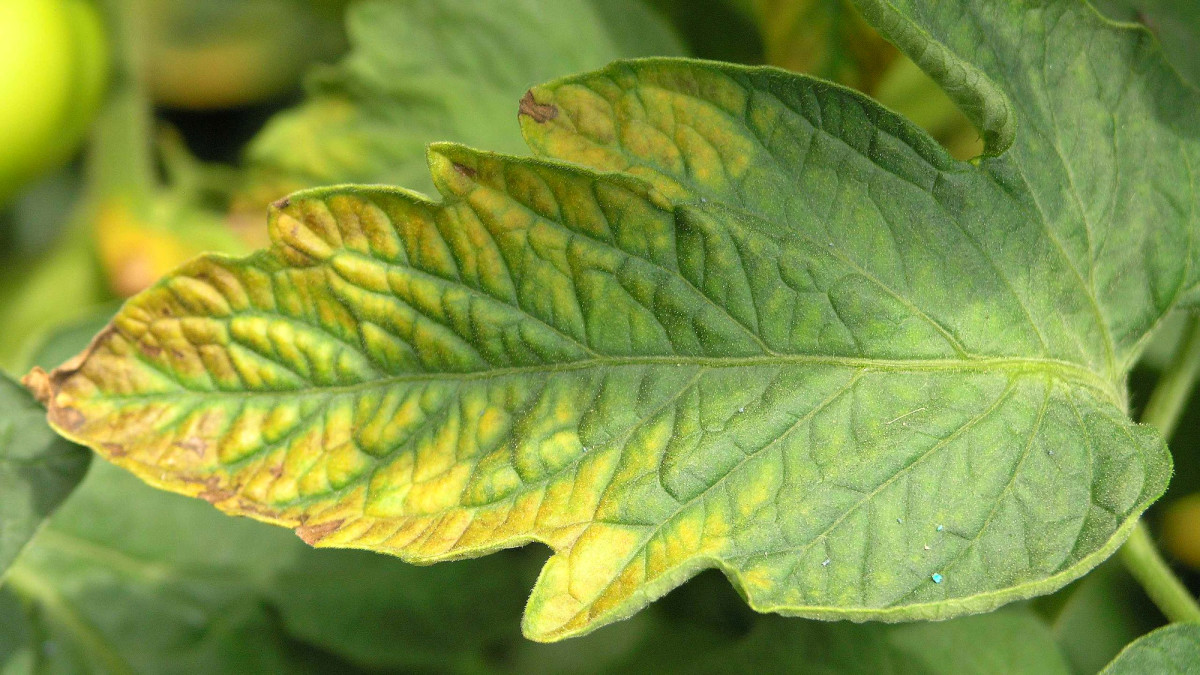Container Gardening - Food in Small Spaces
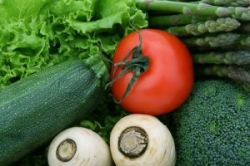
Think you need to own a big yard to have a vegetable garden?
You don't need a big space to grow a great garden. Apartment dwellers and renters who can't build a garden due to space or rental agreements can still have fresh homegrown food in a small space. The secret is simple: containers. We see flowers grown in pots all the time but you can also grow herbs, fruits, and vegetables in containers. Turn your balcony, porch, walkway, or even just a windowsill or two into a small garden to feed yourself and your family.
My Container Garden Experiment
I live in an apartment and I love it. It's one of 4 units in a 180-year-old converted house with some very funky architecture. Unfortunately the only outdoor space I have is a shared porch and a small grassy area adjacent to a gravel parking lot for the art gallery my landlords also own. I grew up on a small farm and my parents still have livestock and a huge vegetable garden which I miss. Now there's no way I can have chickens or goats here but I had to at least try to have a garden.
My first summer here I just had a few herbs on my windowsill and a single tomato plant outside. This year I decided to be more ambitious. I'm growing tomatoes, salad greens, sugar snap peas, strawberries, blueberries, nasturtiums (an edible flower), and lots of herbs (rosemary, sage, basil, oregano, peppermint, cilantro, parsley, and thyme).
Since I've done so much research into growing my own garden I wanted to share it here on Squidoo.
Photo by lukasbenc
- Containers See the list of containers below for more options.
- Small Trowel. For digging, filling containers, etc.
- Watering can, empty jug, or hose for watering. Doesn't need to be fancy but if you don't have a hose to water with your watering can or jug should hold at least a gallon of water preferably more.
- Bamboo stakes, sticks, or trellis. For climbing plants such as peas.
- Tomato cages. Necessary if you are growing tomatoes in a traditional pot, not needing for upside down tomato planters.
- Seeds, seedlings, or full grown plants. Can't have a garden without the plants!
- Potting soil. You can't use plain old topsoil from the yard, it will compact too much in containers, has unpredictable nutrients, and can harbor plant diseases. Get good quality potting soil or other soil from a garden center. If you choose a non-potting soil such as compost mixes or the like you'll also need to mix in sphagnum moss (for moisture retention) and either vermiculite or perlite to reduce soil compaction.
You can get organic potting soil if you want to grow an organic garden but some I've come across don't contain perlite or vermiculite (which are completely natural materials, both are types of volcanic rock) and have a tendency to compact if you don't mix any in.
Photo by lizjones112
There are a lot of different containers you can use for your garden. What you use depends on what you are planting and how big your space is.- Traditional Plant Pots - You know the type, they come in lots of sizes and materials are round with a base smaller than the top.
- Window Boxes - Originally designed to be put on window sills they are long rectangular boxes. Some newer models are designed to be set over porch or deck railings.
- Strawberry Pots - These pots have smaller planting "pockets" that stick out from the sides of the pot plus a larger opening in the top. Designed for strawberries they are also great for herbs.
- Upside Down Planters - The most common variety of these planters is for tomatoes. They are large so they require a sturdy support.
- Hanging Baskets - Good for herbs, edible flowers, strawberries, leafy greens, and loose leaf lettuces. Think lightweight plants that thrive with shallow roots.
- Buckets - Drill a few holes in the bottom of a standard plastic 5 gallon bucket and you have a nearly perfect container for tomatoes and other deep rooted plants. I even have a small blueberry bush in one.
- Found Containers - Everything from wicker baskets to old tins to wooden crates can be used as a container as long as it either has holes in the bottom or can have some drilled in the bottom.
Containers on Amazon
What is your favorite thing to grow?
Most Americans Don't Get Enough Fresh Vegetables
3/4 Of Americans don't get the recommended 3 servings of vegetables a day and 2/3 don't eat the recommended 2 servings of fruit. A small container garden can provide not just enough veggies in the summer but excitement about eating them, especially for kids.
The Water Problem
The biggest problem with containers is that they dry out much faster than regular gardens. There are a few things you can do to help your plants from drying out as fast. Even with these measures would will still need to keep a close eye on your plants moisture levels and water every day (or nearly every day). The best time to water is either in early morning or evening when temperatures are cooler.
Water retaining potting soil There are potting soils especially designed to hold moisture in and not dry out as fast.
Water beads These water absorbing polymers can hold many times their own volume of water.
Irrigation systems You can purchase a drip irrigation system for plants or make one of your own using this instructable.
Self-watering Containers These plant pots have a reservoir of water in the bottom, you can buy them or make your own.
Great Gardening Links
- Farmers' Almanac - Weather, Gardening, Best Days, Full Moons
Farmers' Almanac provides free long range weather forecasts, home and garden advice, astronomy and full moon information, natural cures and cooking. - Gardening - Advice and Tips, Vegetable Gardening, Container Gardening, More - BHG.com
How to grow and care for flowers, plants, and trees. Find backyard and front yard landscaping ideas, landscape plans, a home garden planner, plant encyclopedia, garden blogs, and more. From Better Homes & Gardens - Gardening Resources :: National Gardening Association
Information and inspiration on gardening with answers to questions about lawns, landscapes, trees, shrubs, perennials, annuals, vegetables, herbs and flowers, organic gardens, compost, urban, soil, design, roses, tomato, how to grow in containers. - Creative Container Gardens
Whether you feel constrained by space or are just looking for new ways to display your garden, Creative Container Gardens is for you!
Container Gardening Videos
The Book I'm Using



